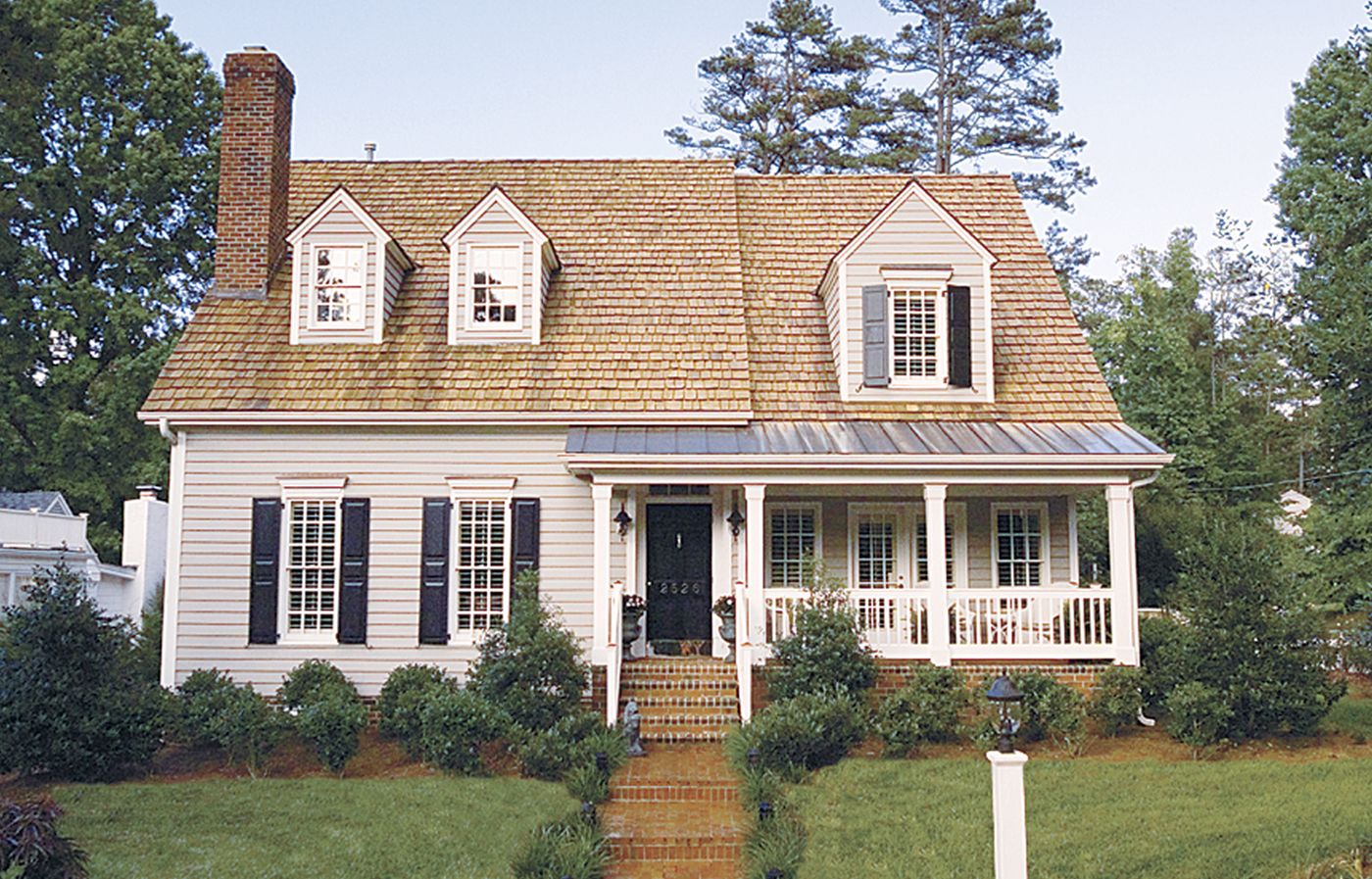Windows are more than just functional elements of a home—they’re key architectural features that contribute significantly to a house’s character. The right window style can enhance your home’s curb appeal, complement its architectural design, and improve energy efficiency. In this guide, we’ll explore popular wood window styles and how they can influence the look and feel of your home.
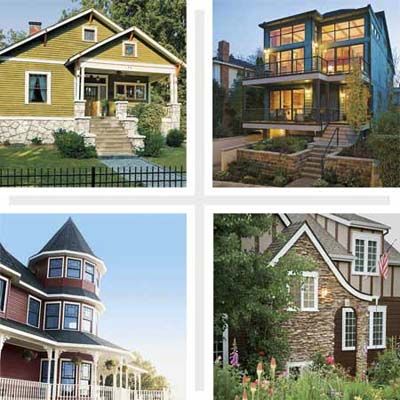
Cape Cod Wood Windows
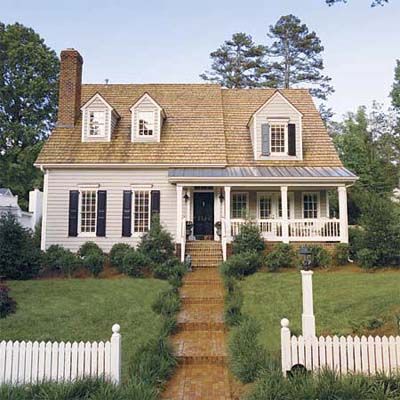
Cape Cod-style homes are known for their charming simplicity and cozy appeal. These cottages typically feature double-hung windows with rectangular muntins on both the top and bottom sashes. Muntins are the vertical or horizontal bars that divide the glass panes. This classic window style perfectly complements the traditional New England-style Cape Cod homes.
Double-hung windows are an excellent choice because they allow for easy cleaning and maintenance, as both sashes can tilt inward. These windows provide efficient ventilation, allowing homeowners to control airflow by opening either the top or bottom sash. The timeless look of double-hung windows ensures they stay in harmony with the charming, historical appearance of these homes.
Similar to shown: Andersen 400 Series Woodwright vinyl-clad double-hungs
Craftsman Wood Windows
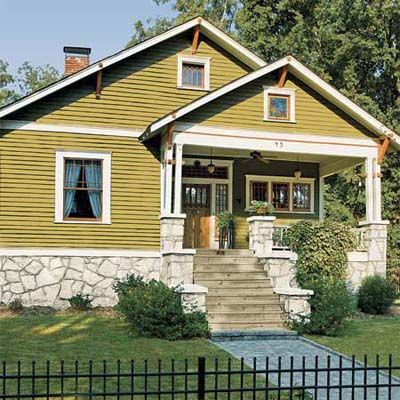
Craftsman-style homes, also known as bungalows, often feature a combination of double-hung and casement windows. What sets these windows apart is their distinctive geometric and eye-catching muntin patterns.
The use of both double-hung and casement windows in Craftsman homes allows for versatility in design and function. Double-hung windows provide a traditional look, while casement windows offer maximum ventilation and unobstructed views when fully open. Together, these windows ensure Craftsman homes have a blend of aesthetic appeal and practicality.
Similar to shown: Kolbe Heritage Series Sterling double-hungs or casements
Modern Wood Windows
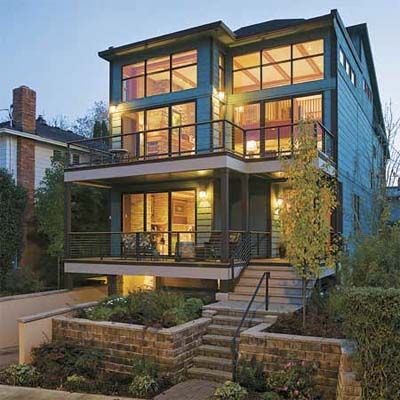
Modern architectural styles celebrate sleekness and minimalism, and their window choices reflect this. Architects designing modern homes often favor large, unadorned sliders and fixed picture windows. These expansive glass surfaces are frequently grouped together to create dramatic walls of glass, blurring the line between indoor and outdoor spaces.
The use of large windows in modern homes not only creates a bold visual statement but also maximizes natural light and provides panoramic views of the surrounding landscape. This approach to window design aligns perfectly with the modern emphasis on open floor plans and a connection to nature. Spacious windows make modern homes feel more expansive.
Similar to shown: Weather Shield Legacy Series aluminum-clad fixed units
Tudor Wood Windows
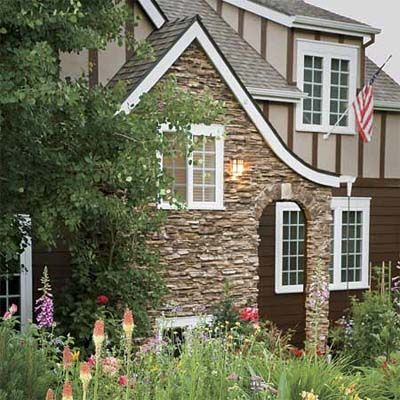
Tudor-style homes draw inspiration from medieval architecture, and their windows reflect this historical influence. Typically, Tudor windows are tall, narrow casements with numerous small panes. These windows are often grouped in pairs or trios, creating a distinctive and charming facade.
The multi-paned design of Tudor windows not only adds visual interest but also serves a practical purpose. In medieval times, smaller panes of glass were easier to produce and transport. Today, this design element adds character and authenticity to Tudor-style homes while still providing modern energy efficiency when constructed with high-quality materials. The stylized leaded glass and decorative elements of these windows amplify the medieval charm that is intrinsic to Tudor homes.
Similar to shown: Pella ProLine aluminum-clad casements
Queen Anne Wood Windows
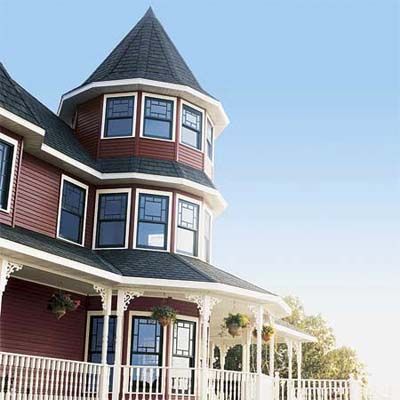
Queen Anne-style homes are known for their ornate and eclectic designs, and their windows are no exception. Double-hung windows are the rule in these Victorian-era homes, with a preference for taller windows that accentuate the vertical lines of the architecture. The upper sash often features a delicate muntin pattern, adding an extra layer of visual interest to the facade.
The use of tall double-hung windows in Queen Anne homes contributes to the style’s characteristic verticality while allowing for excellent ventilation. The option to open both the top and bottom sashes provides flexibility in controlling airflow, a valuable feature in these often large and ornate homes. Such windows elegantly complement the intricate and decorative design elements typical of Queen Anne architecture.
Shown Here: Marvin Ultimate double-hungs
Wood Window Types Explained
Before choosing the right windows for your home, understand the key differences and features associated with each window type. Certain types are better suited for specific spaces or needs. Below, we’ll break down some of the most common window types, from versatile double-hung windows to space-saving sliders, to help you make an informed decision.
Double-Hung Windows

Double-hung windows are a classic choice for many home styles. These windows feature two sashes that slide up and down within the frame. In contrast, single-hung windows only allow the lower sash to move. Modern double-hung windows often have sashes that tilt inward, making cleaning and maintenance much easier, especially for upper-story windows.
While double-hung windows offer versatility and a traditional look, they have some limitations. They can be challenging to weatherstrip effectively, which may impact energy efficiency. When open, the sashes cover half of the window opening, potentially limiting airflow compared to other window types. Nonetheless, their traditional design and practicality make them versatile for a range of architectural styles.
Casement Windows
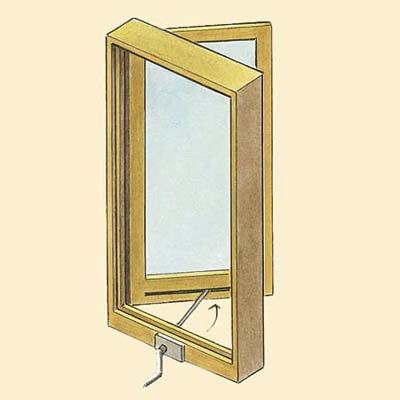
Casement windows are hinged on one side and swing outward, operated either by a push or a hand crank. This design allows for a full-height opening, providing maximum ventilation when fully extended. Casement windows are also known for their excellent energy efficiency, as the sash presses tightly against the frame when closed and creates a strong seal.
If casement windows are left open during rainy weather, the exposed sash can suffer water damage. Because the sash swings outward, casement windows may not be ideal for areas with heavy foot traffic outside the home, such as along walkways or patios. Despite these factors, casement windows remain a favorite due to their ease of operation and energy-efficient properties.
Fixed Windows
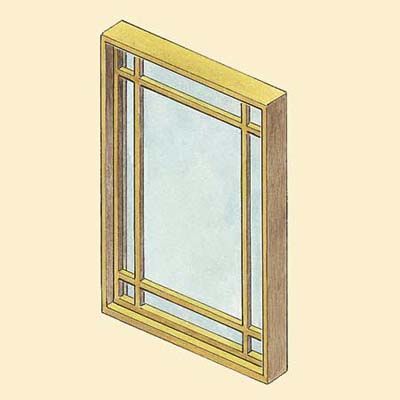
Fixed windows, also known as picture windows, are non-operable windows designed to provide unobstructed views and allow maximum light into a space. These windows are typically less expensive than operable windows and offer superior energy efficiency due to their airtight construction.
Fixed windows are often used as architectural accents or in areas where ventilation isn’t a primary concern, such as in gable peaks or as part of a larger window arrangement. They’re available in a wide variety of sizes and shapes, allowing for creative design possibilities in both traditional and modern home styles. Their adaptability makes them an excellent choice for enhancing the aesthetic appeal of any architectural style.
Slider Windows
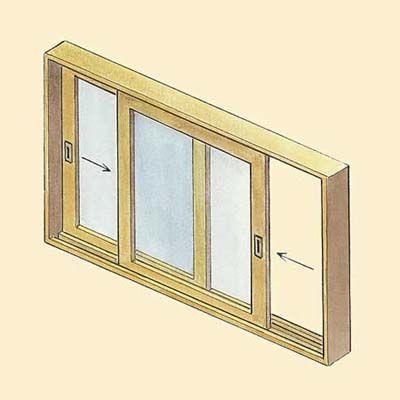
Slider windows feature one or two sashes that move horizontally along a track, similar to a sliding patio door. This design makes them easy to operate, as there’s no need to lift heavy sashes. Slider windows are particularly well-suited for spaces where a projecting window sash would be impractical, such as next to outdoor living areas or walkways.
While slider windows offer ease of use and a contemporary look, the tracks require regular cleaning to ensure smooth operation. Like double-hung windows, open sashes cover half the window opening, potentially limiting airflow. Slider windows may not provide as tight a seal as other window types, which could impact energy efficiency. Despite these considerations, they remain a popular choice for modern and contemporary homes.
Awning and Hopper Windows
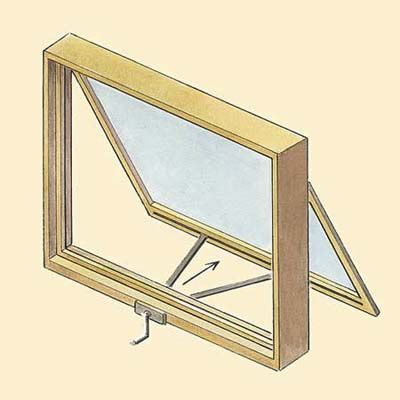
Awning and hopper windows are similar in design but operate in opposite directions. Awning windows are hinged at the top and open outward from the bottom, while hopper windows are hinged at the bottom and open inward from the top. Both types are often used in combination with larger fixed windows to provide ventilation.
Awning windows are particularly useful in areas with frequent rain, as they can be left open during light precipitation without allowing water inside. They typically operate with a crank mechanism and feature screens on the interior. Hopper windows are often used in basements or other areas where an outward-opening window would be impractical. They are usually pulled open manually and have exterior screens. Both designs offer unique solutions to specific needs in various parts of the home.
Our Conclusion
Wood windows offer a timeless appeal and versatility that can enhance the beauty and functionality of any home. By carefully considering your home’s architectural style and your specific needs, you can choose the perfect wood window style to complement your space. Whether you opt for classic double-hung, modern sliders, or a combination of window types, wood windows provide warmth, character, and enduring quality that can elevate your home’s appearance.
